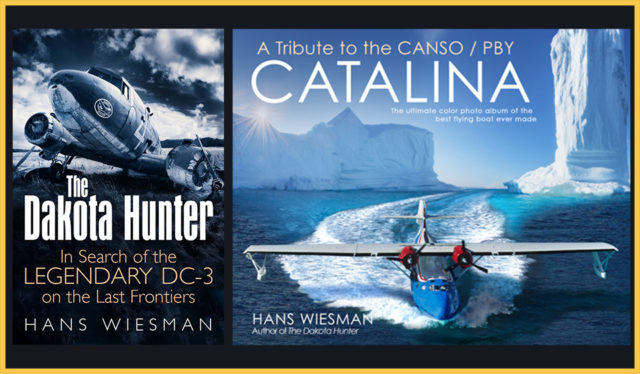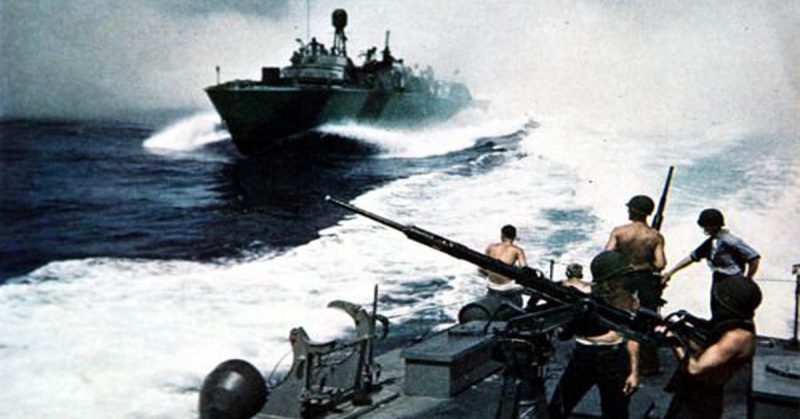War History Online presents this Guest Article from respected Blogger and Author Hans Wiesman.
In this Dakota Hunter Blog, you’ll read about two fighting groups of WW II fame, that conquered a solid reputation for often operating in isolation behind enemy lines. With a small group or on their own, fighting their mini battles in a World War of unreal proportions as history had never seen before. In that immense Pacific Ocean, the largest stretch of water in this world, mighty Naval fleets, and Armadas of fighters and bombers went to fight the “Empire of the Sun” with hundreds of thousands of soldiers, pilots, and sailors. But there was a handful of men out there in that war theater that fought the war on a much smaller scale against that same enemy. Those were the special Motor Torpedo Boat (MTB) squadrons of the US NAVY with their PT-Boats (patrol-torpedo), named the “Mosquitoes” and the squadrons of the USAAF/RAAF with their PBY-5A Catalinas, named the “Black Cats”.
Both fighting groups had basically the same role: with small units or even as a lonesome boat or flying boat attacking enemy ships like “rogue sharks” that suddenly arrive on the scene from the deep of the ocean and wreak havoc. It was their mission to intercept, harass and disturb the Japanese Imperial Navy and Army operations. Blocking harbors and shipping lines with mine droppings and surprise attacks in a “Hit-and-Run” style, attacking armored barges, cargo ships and port installations, striking them with their machine guns, torpedoes, and depth charges and withdrawing before the enemy got the opportunity to regroup and make a counter attack with heavier ships or aircraft. In this volume 1, I will focus on the PT-Boats. Volume 2 will be published later, about the PBY Catalina Black Cats.
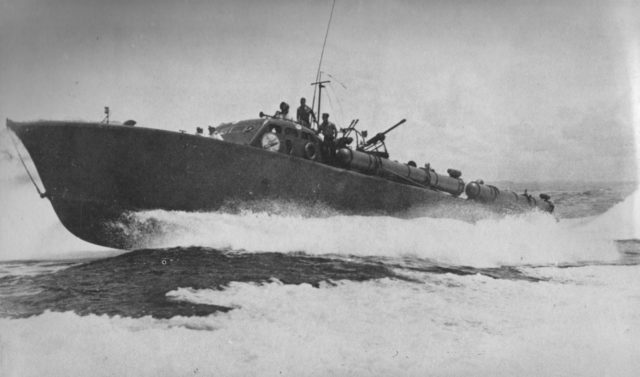
It was that typical style of a stealthy war with sometimes only a simple “One-Boat” or “One-Aircraft” army of 7 to 11 crew, deeply penetrating into enemy-controlled airspace or sea-territory. Such type of warfare required extreme bravery, initiative, a special brotherhood, a good sense of survival and knowing the capacities of the crew and the transport- platform and its weapons on board.
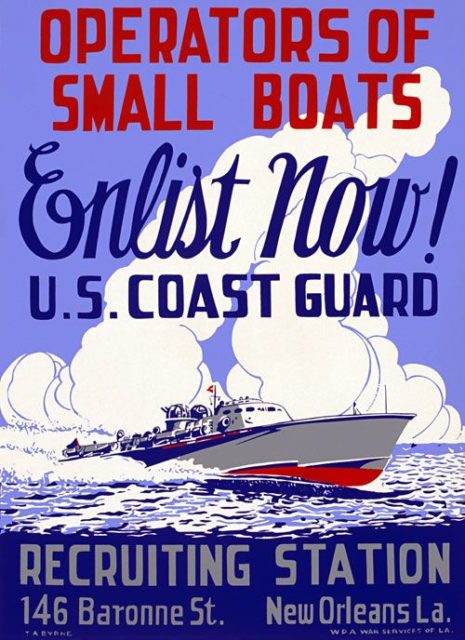
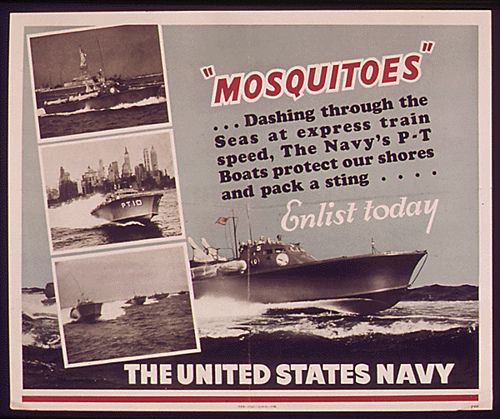
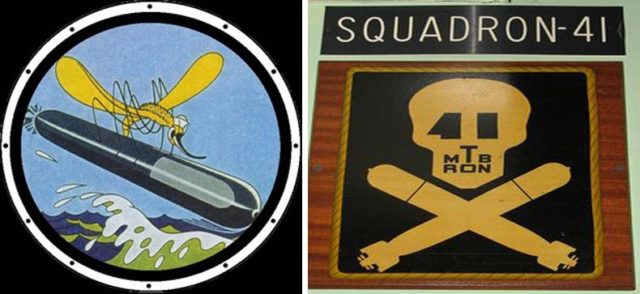
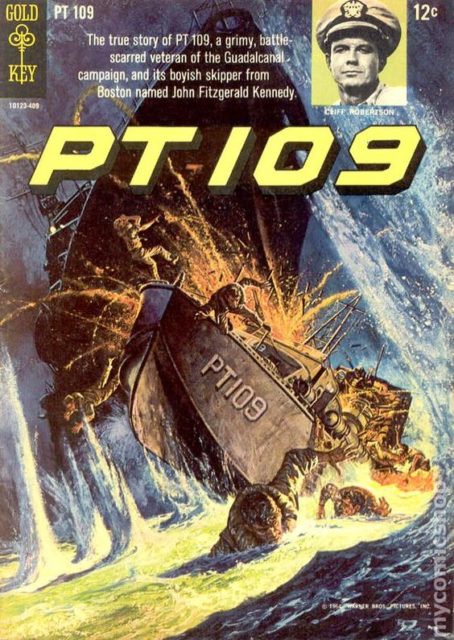
At the start of the war in December 1941 and early 1942, with the heavy ship losses at Pearl Harbor and the compelling situation of fighting a two-ocean war, the US Navy suffered from a dramatic lack of capital ships. Once they started their counter attacks against the Japanese, they simply did not have the shipping material to counter all of the Imperial Navy’s assaults, mainly executed at night by sea. On August 7, 1942, the United States Marine Corps’ First Division landed on Guadalcanal and took a part of the island. Soon, the USAAF had settled airspace superiority in daytime over the many islands. Consequently, the Japanese learned to avoid any daytime naval assault and opted for the nights to resupply their troops on Guadalcanal, Tulagi and other islands with food, fuel, ammo and new soldiers. From Rabaul, they steamed up every night as a clockwork, hence the nickname “the Tokyo Express”.
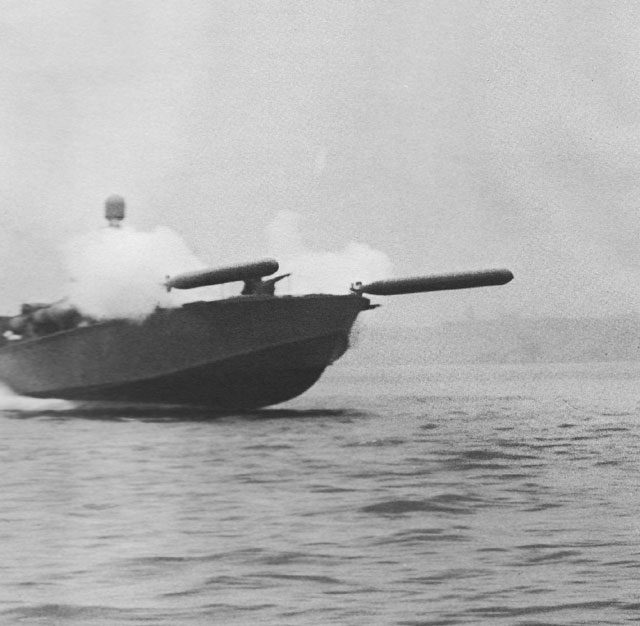
It was a very embarrassing situation, all Allied daytime made victories could be nullified by the Japanese forces as they came at night to replace their losses with new supplies in a huge sailing train of warships, cargo barges etc. The Americans were in that early Pacific war year 1942 not able to take advantage of their daytime air superiority. So at night, their limited number of warships was too valuable to risk any battle damage, easily inflicted when not having the routine daytime aircover. The PT-boat would bring relief as a bunch of “Mosquitoes”, buzzing at night around the Japanese beachheads in their speedy and fiercely fighting craft that was easy to built in numbers with 3 specialty wharfs contracted. Such stinging Mosquito could do BIG harm to the supply lines of the nocturnal Tokyo Express deliveries machine, even if that was only to keep the Japanese soldier awake or on his toes.
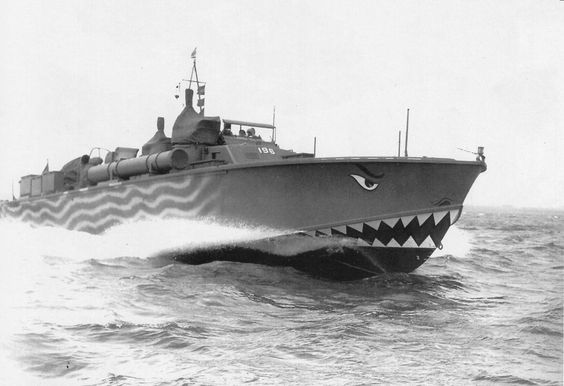
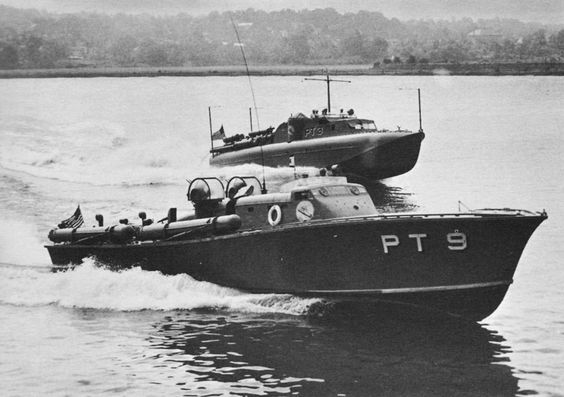
In December 1941, it was the Electric Boat Company (Elco) that was awarded a contract to build 36 PT’s of their newly-designed PT 103-196 series; the craft’s silhouette settled the term “PT-boat”, soon to become the archetype of how a PT should look. Their planing hull designs and building techniques were clearly borrowed from the pre-war offshore powerboat racing models. PT- boats were constructed from many materials: constructed upside down, the frames and keel were made from laminated spruce, oak, double planked with mahogany boards. Sandwiched between the two layers of planking was aircraft canvas glued, giving the hull to maintain its strength and watertight integrity, even resistant against the high Ocean swell pounding. The deck was double-planked in a similar manner as the hull. (For more info and photos, see also http://pt-king.gdinc.com/PT109article.html)
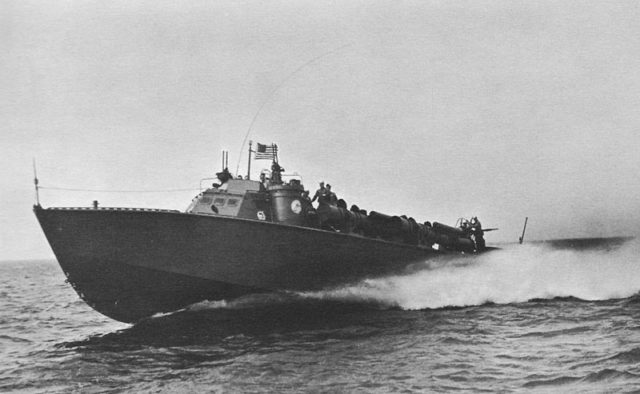
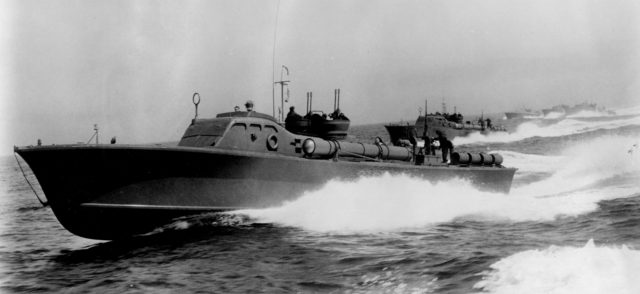
There were other boat builders being contracted. From New Orleans, that was Higgins Industries, and the Jacksonville-based Huckins Yacht Company but Electric Boat Company remained the main builder of PT- boats for the US Navy. Their 103-series PT’s were the successors to Elco’s pre-war craft, the PT 20-68 series seventy-seven-foot boats; the 103’s were an entirely new design, built to capitalize on the strengths of the 77-foot model while overcoming some of its setbacks. Eighty feet long, weighing in at 50 tons fully loaded, the new boats were a knot or two slower than their predecessors. But the 103 series/ 80 -footers rode more comfortably than the 77-footers, which had a tendency to pound heavily at an open ocean swell. But as there came their first successes, the MTB squadrons must have screamed for the two major assets that they could never have in abundance; Speed and Fire-Power adapted to the fighting role in which they were supposed to accomplish and beat the hell out of the Japanese ships. The crew was normally eleven men, two officers, and nine sailors.The 80-footers’ slightly larger size and more robust construction allowed the boat to carry more and more guns as the war progressed and the engines were made more powerful in order not to lose speed with all that extra weight. Elco built in total 326 80-footers and allegedly some 550-600 PT boats have been built between 1941 -1945.
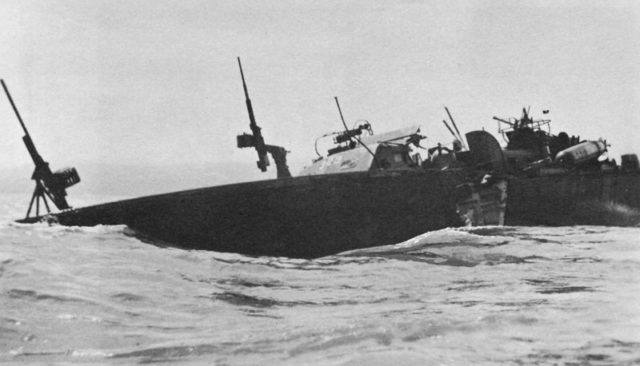
In actual battle practice, the PT’s usually crept to within 1000 to 100 yards of their intended victim with engines muffled before letting loose with one or more torpedoes. Evidently, such daring approach could only be executed successfully at night, with a special device to sound proof their heavy engines. Armament included four .50 caliber Browning M-1 machine guns installed in two manually-operated twin turrets–one was mounted forward and to starboard of the cockpit, the other was aft and installed on the port side of the dayroom canopy. A 20mm Oerlikon Mark IV automatic cannon was mounted on the stern for anti-aircraft defense, while four 21-inch Mark VIII destroyer torpedoes launched from Mark XVIII tubes utilizing a black powder launching charge were often installed, but that setup was very often subject for optional armaments. Later, torpedoes were fixed on the sides in “clamps” which simply dropped the torpedo overboard and the explosive started on its own power, avoiding the black powder flash from the tube launch.
The PT Boats primary weapon, the Mark VIII Torpedo was quite unreliable in operations due to malfunctioning during the launch, its directional stability and with its sensitive ignition mechanism. An obsolescent relic from the First World War, the Mark VIII was plagued by many snags, not a very reassuring idea if you were just about to attack a much larger vessel that carried superior guns. The PT crew, evidently hoping to make a killer strike, must have welcomed the sound of the ensuing explosion. But if there was a malfunctioning of the torpedo or a failure to hit the enemy ship for whatever reason, it was a matter of getting the hell out of there as quickly as possible. With no armored hull and deck, the PT boats were very vulnerable to enemy fire. They were not designed to engage in a conventional naval battle. Instead, it was the surprise factor and their high maneuverability and speed which could create very small slots to score a strike and then “Run for life”.
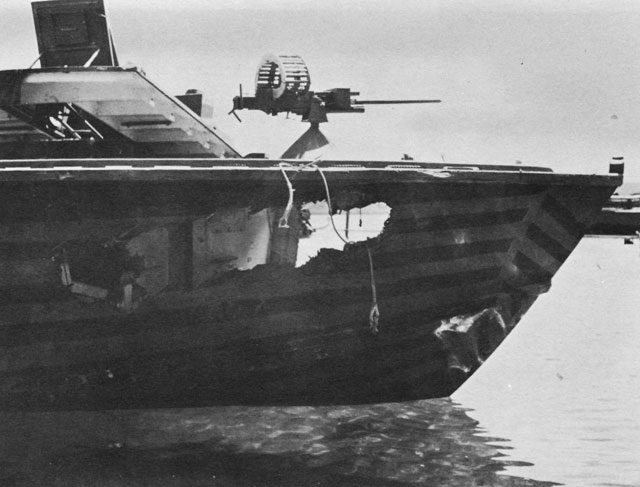
Later in the war, hefty Mark VI depth charges were added for possible anti-submarine work, but the PT’s did not possess Sonar or MAD (Magnetic Anomaly Detection) equipment, the ASW (Anti -Submarine Warfare) hardware that made the Catalinas so successful later in the war (see next Vol.2). Depth charges were later successfully used by PT boats in destroying barges that were armored and too tough to be sunk by PT gunfire. Also, the depth charges were used for discouraging any Japanese destroyer that came after a fleeing PT. The depth charge’s three hundred pounds of TNT was just enough to sink an enemy destroyer if ignited at the right moment, close to or under the ship. Additional weapons were added later, along with the radar housing mounted on a high mast and a 35-gallon smoke generator on the stern, that could seriously take the PT boat out of sight for long enough to avoid a harmful exposure.
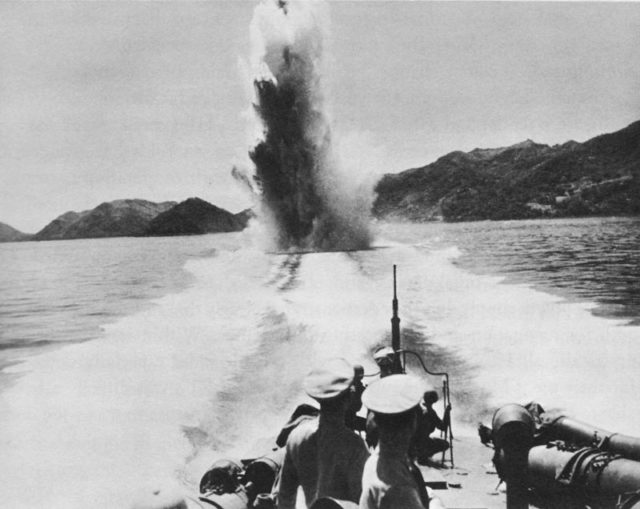
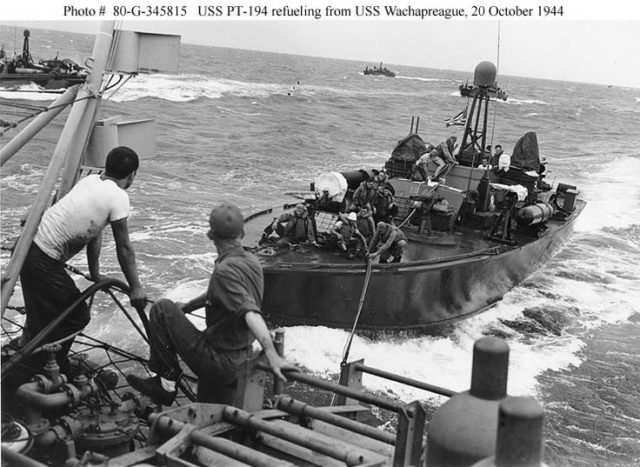
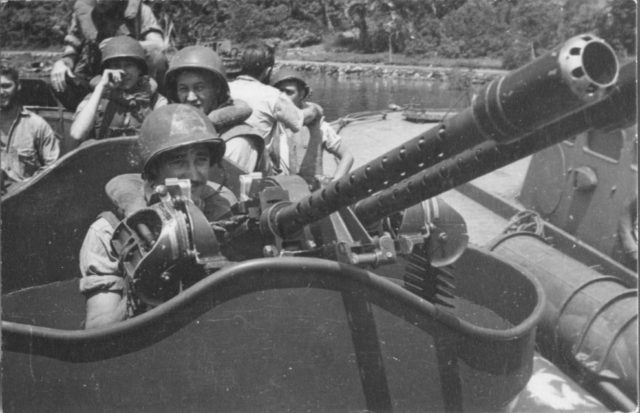
A twin .50 caliber mount on on an American PT boat.
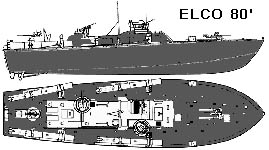
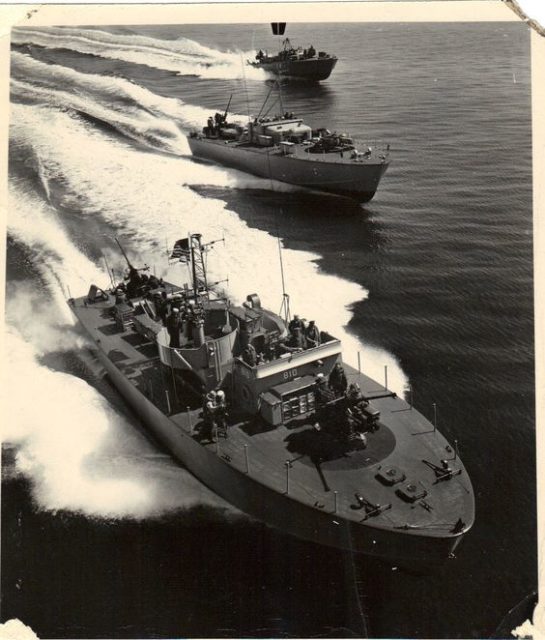
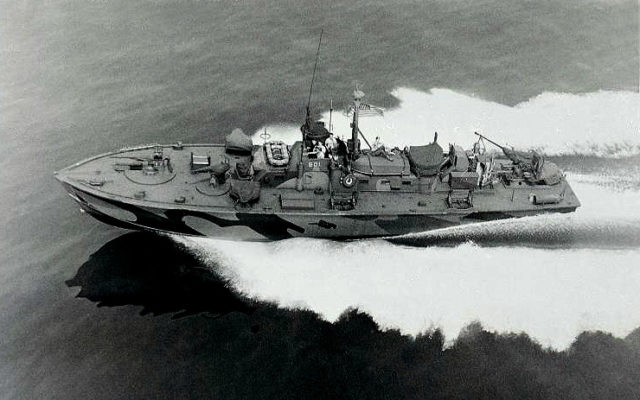
As my friends, followers, and readership already know, I was always mesmerized by the sound and pulse of big piston engines. Whether they are mounted in a car, truck, boat, airplane or motorcycle, the view, the vibration and the noise they made, it always put a spell on me and I can still watch and listen in awe to the good old piston “sound of music”. My first encounters with such engines took place at a very young age when I flew as a 3-year old kid in a DC-3 that flew my family from Trinidad to Curacao in the Caribbean. Later, I flew again with a DC-3 from Java to Borneo, Indonesia where my family lived for seven years. In the jungle settlements where my father worked for the Shell Oil company as an oil-exploring engineer, I grew up in a world of big motors for pumps, derricks etc. On top, the DC-3 and the PBY Catalina became part of our life in the remote outposts as the only existing transports to get us in and out of that tropical rain forest. With such background (as described in my book The Dakota Hunter), I became a lifetime “Petrol Head”. So, you will not be surprised if I give you some details and a photo of that PT-Boat’s mighty engines.
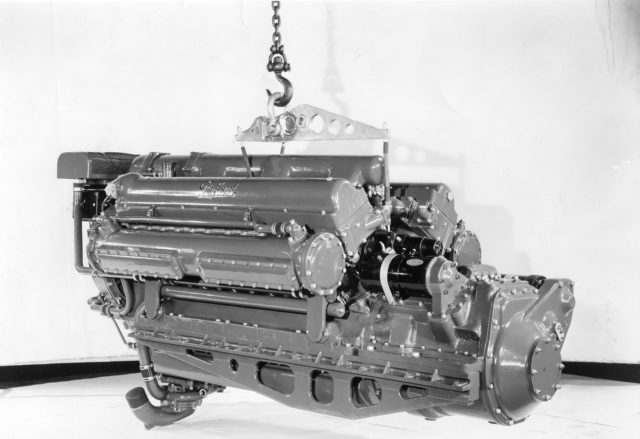
Initially rated for 1,200 horsepower, later variants rose in performance to 1,350 and finally 1,500 horsepower as the boats gained weight from more and more weapons and equipment. The originally as Liberty aero-engine designed Packardswere modified/ marinized for use in the PTs. They were fed by tanks with a max capacity of three thousand gallons of 100-octane aviation grade fuel (10,000 liters!) The three Packards could push a fully-fueled, fully armed PT across the water at a maximum speed of forty-two knots (75 km/h). And when silence for a sneak attack was desired, mufflers attached to the exhaust ports at the stern enabled the boats to silently creep along at about ten knots. There are rumors that some PT’s were driven by Rolls Royce Merlin engines, as were used in the iconic WW II fighters as the Spitfire, the P-51 Mustang, and many other aircraft. I could not find any evidence, but if you think you have better information and documentation, please step forward and let me know, never too old to learn.
The book ends with a wealth of Catalina photos of the Survivors, as static museum displays or flying aircraft! Photographers, Operators, and major Aviation Museums from the USA, Canada, UK, Aus, NZ, NL, SA, Sweden have contributed with their best photos, including some wartime photos granted by the Smithsonian Institution, Washington, DC and the full Kendall
